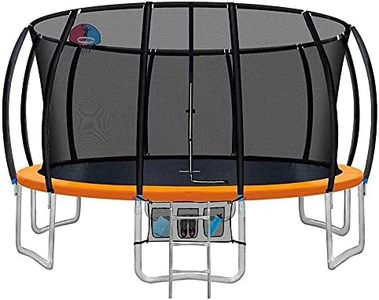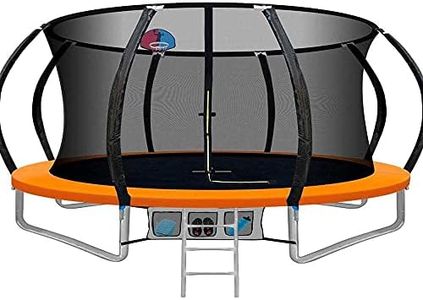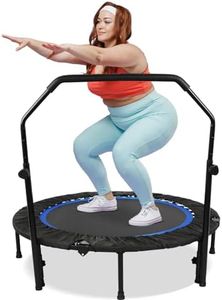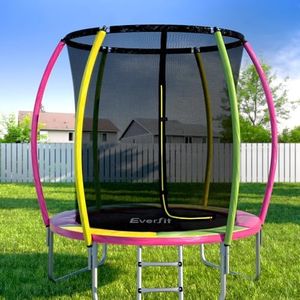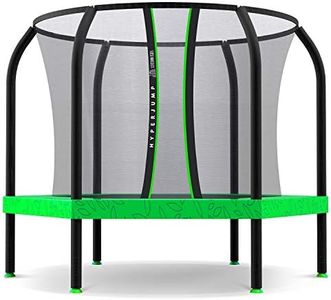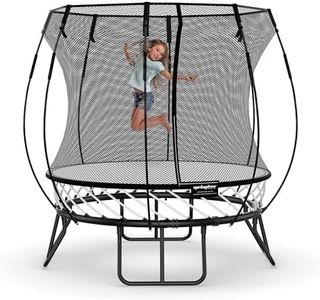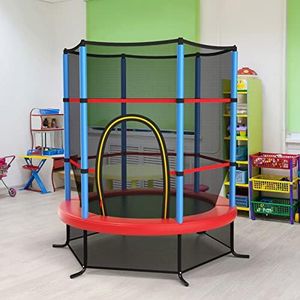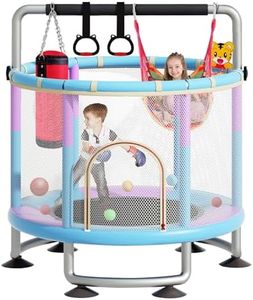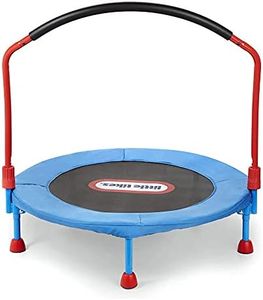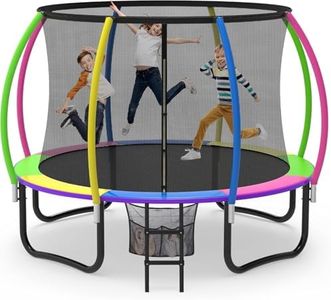We Use CookiesWe use cookies to enhance the security, performance,
functionality and for analytical and promotional activities. By continuing to browse this site you
are agreeing to our privacy policy
10 Best Round Trampolines
From leading brands and best sellers available on the web.Buying Guide for the Best Round Trampolines
Choosing the right round trampoline is all about matching your needs and preferences to key features that ensure safety, durability, and enjoyment. Round trampolines are popular for families because they naturally guide jumpers toward the center, making them a safer option for most backyards. As you shop, consider the space you have available, who will be using the trampoline, and the main activities you plan to do—whether it’s casual bouncing, exercise, or tricks. Understanding the main specifications will help you make a more informed and confident choice.Size (Diameter)The size of a round trampoline, usually measured in feet across the diameter, determines how much jumping space you have. Smaller trampolines (around 8-10 feet) are suitable for limited spaces and younger children, while medium sizes (12-14 feet) cater well to families with one or two kids. Larger sizes (15 feet and above) are ideal if you have older kids, teens, multiple jumpers, or simply want more room for tricks. Your available yard space and the number of expected users should guide your choice, as you’ll want at least a couple of feet of clearance around the trampoline for safety.
Weight LimitThe weight limit indicates how much combined weight the trampoline can safely handle. Lower weight limits (around 100-150 pounds) are usually for small, kid-focused models, while higher limits (up to 300 pounds or more) allow for older kids, adults, or multiple jumpers. Always choose a weight limit that matches your heaviest user, and remember to consider future use as children grow or if adults might want to jump too.
Frame MaterialThe frame material affects the trampoline’s strength and how well it can withstand weather and frequent use. Most frames are made from steel, and higher-quality trampolines use galvanized or powder-coated steel to resist rust and increase longevity. Look for sturdy, rust-resistant metal if you plan to leave the trampoline outdoors or want it to last for years. Thicker steel usually means a stronger, safer trampoline.
Springs and PaddingSprings provide bounce, and their length and number will affect how soft or powerful the bounce feels. Longer or more springs generally offer a gentler, higher bounce, which is better for older kids and adults doing tricks. Shorter or fewer springs are fine for younger children. The padding, which covers the springs and frame, is crucial for safety, preventing injuries from accidental contact. Thicker, wide, and UV-protected pads are best, especially if the trampoline will stay outdoors.
Enclosure NetAn enclosure net surrounds the trampoline and keeps users from falling off, which greatly reduces injury risk. Look for nets with high, tightly-woven mesh and sturdy poles, positioned either inside or outside of the springs. A net that attaches on the inside of the padding tends to be safer for kids, as it reduces access to the springs.
Mat Material and UV ResistanceThe jumping mat is what you actually bounce on, and it should be strong, weather-resistant, and comfortable. Look for mats made from polypropylene with UV protection, which prevents sun damage and helps the mat last longer. A UV-resistant mat is especially important if your trampoline will stay outdoors and be used often.
Assembly and MaintenanceConsider how easy the trampoline is to assemble and maintain. Some trampolines have clear instructions and require only basic tools, while others are more complex. Features like snap-together frames or labeled pieces can speed up assembly. For maintenance, check if parts (like pads or nets) are easily replaceable, as this will help extend the life of your trampoline. Choose an option that matches your comfort with assembly and ongoing care.
